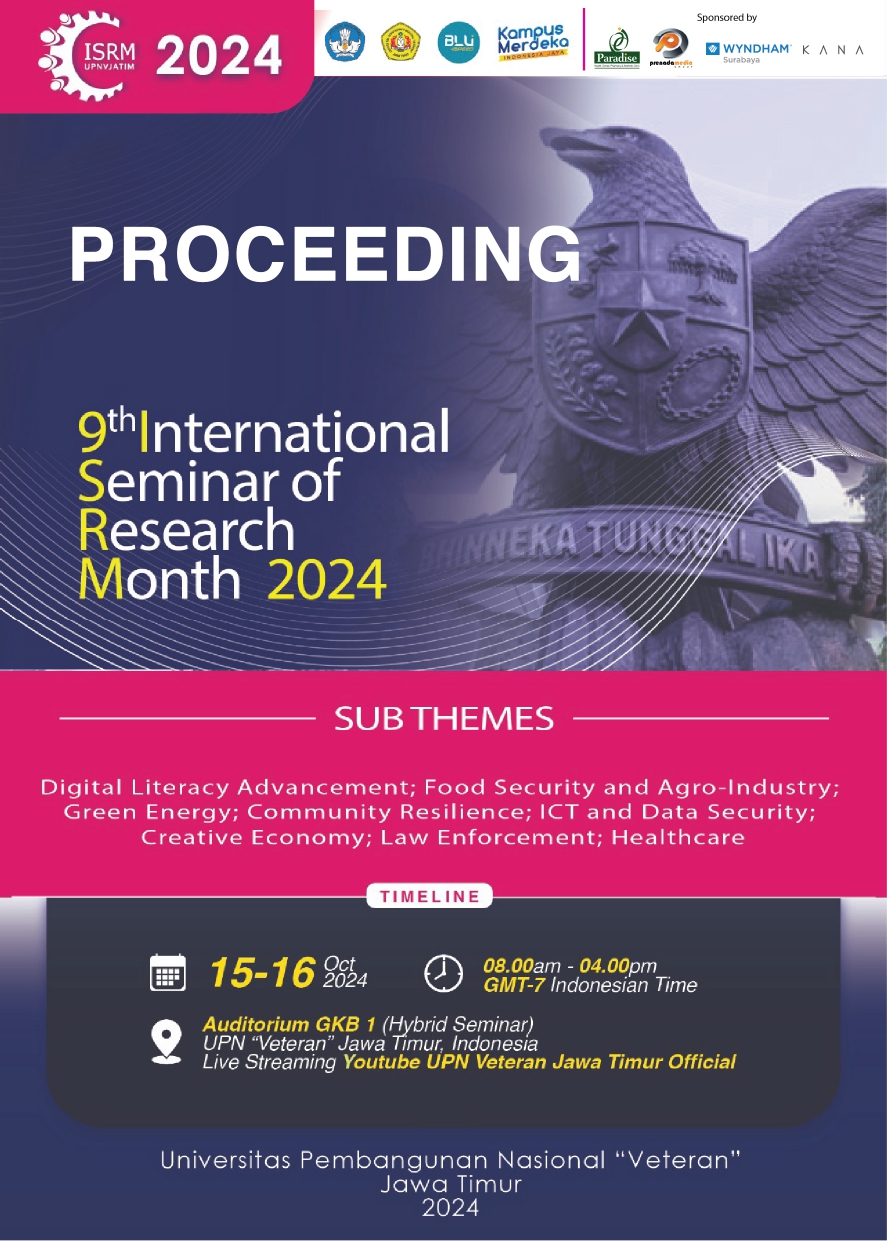Optimization of Glucose Levels from Alcohol Industry Liquid Waste on the Fermentation Process Using Response Surface Methodology
DOI:
https://doi.org/10.11594/nstp.2025.4701Keywords:
Alcohol industry liquid waste, bioethanol, glucose, response surface methodology, optimizationAbstract
The liquid waste generated by the alcohol industry is PT. Energi Agro Nusantara, which is a company in the alcohol sector, includes a significant amount of glucose, around 10%, as well as starch and other by-products. This waste has the potential to be used for the production of bioethanol by increasing the glucose levels and undergoing additional processing. The objective of this study is to achieve elevated concentrations of glucose and bioethanol through the processes of alkaline hydrolysis and anaerobic fermentation. The liquid waste undergoes an alkaline hydrolysis procedure using an 8N NaOH solution under pH 4 conditions. The fermentation procedure is conducted without the presence of oxygen, using 0.3 grams per milliliter of turbo yeast pure 48. The fermentation durations range from 4 to 12 days, with increments of 2 days. The optimization results acquired by RSM (Response Surface Methodology) indicated that the most favorable outcomes were achieved when the turbo yeast pure 48 concentration was 0.419 gr/ml, the fermentation time was 11.978 days, the glucose content was 21.231%, and the bioethanol content was 4.087%. The research findings can help decrease waste produced by the alcohol industry. The research also shows that the anaerobic fermentation process yields higher glucose levels. However, not all of the glucose obtained from this process is converted into bioethanol. The liquid waste from the alcohol industry contains residual glucose rather than reduced glucose. Therefore, the glucose produced during anaerobic fermentation can be utilized as an additional component in the flavoring alcohol industry taste.
Downloads
References
Anum, S., Tabassum, L. S. A., Qasem, M., & Taseer, M., (2021). A new modified Kies Fréchet distribution: Applications of the mortality rate of Covid-19. Results in Physics, 28, 104638. https://doi.org/10.1016/j.rinp. 2021.104638.
Bachtiar, S., Wahyuningtiyas, R., & Sari, N. K. (2021), Bioetanol dari limbah cair tepung terigu dengan proses fermentasi menggunakan turbo yeast. Jurnal Teknik Kimia, 16(1), 29–34. https://doi.org/10.33005/jurnal_tekkim.v16i1.2845
Chriswardana, T.H., Mulyaningsih, Y., Mulyaningsih, Y., Bahar, A. H., & Riayatsyah, T. M. I, (2021). Optimization of sugar production from durian seeds via alkaline hydrolysis for second-generation bioethanol production. Clean Energy, 5(2), 375–386.
Dhanavia. (2019). Anaerobic digester PT. Energi Agro Nusatara (Energi Agro Nusantara). Https://Energi Agro Nusantara.Co.Id/Bio-Digester-Dan-Biogas.
Duan, W., Xiao, X., Dongyangfu, Y., et al. (2019), Neural dynamics for control of industrial agitator tank with rapid convergence and perturbations rejection. IEEE Access, 7, 102941-102950.
Khodijah, S., & Abtokhi, A. (2015), Analisis pengaruh variasi persentase ragi (Saccharomyces cerevisiae) dan waktu pada proses fermentasi dalam pemanfaatan duckweed (Lemna minor) sebagai bioethanol. Jurnal Neutrino, 7(2), 71.
Sari, N. K., Purbasari I., Jariyah J., (2020). Bioethanol optimization in hydrolysis and fermentation process with surface response method. IEEE Access, 297-300
Sari, N. K., Purbasari, I. Y., Anggoro P. W., Jamari J., & Bayuseno A. P. (2022). Reuse of wheat flour liquid waste for enzymatic hydrolysis to yield glucose-derived bioethanol. Journal Cogent Engineering, Taylor & Francis, 9(1), 1-17. https://doi.org/10.1080/23311916.2022.2101229
Sergio, Q., Marino R., Jose M., Francisco J. S., (2019), A Novel data processing technique for expert resonant nano-pillars transducers: a case study measuring ethanol in water and wine liquid matrices. IEEE Access, 7, 9778-9788, http://dx.doi.org/10.1109/ACCESS.2019.2939576.
Muhammad, Z., Thabet, A., & Fawad, N. (2021). Exponentiated transformation of Gumbel Type-II distribution for modeling COVID-19 data. Alexandria Engineering Journal, 60(1), 671–689, https://doi.org/ 10.1016/j.aej.2021.01.022.
Nathan, W. G., Rachel, A. H., Holly, K. S., & Lee, C. S. (2019). Engineering solventogenic clostridia for commercial production of bio-chemicals. Journal the Institution of Engineering and Technology, 3(3), 41-45.
Putri, N. A., Nur Chasanah, Y. H., & Sari, N.K. (2023). Optimasi kadar bioetanol dari limbah cair tepung terigu menggunakan Response Surface Method (RSM). Journal Inovasi Teknik Kimia, 8(3), 155–159.
Wang, Y., Jinna, L., & W. Huiyong. (2019). Model-based application of fuzzy control to a class of industrial process operation systems with uncertainty. IEEE Access, Vol. 5, pp. 23351-23360, 2017.
Downloads
Published
Conference Proceedings Volume
Section
License
Copyright (c) 2025 Ni Ketut Sari, Erwan Adi Saputro, Reva Edra Nugraha, Salsa Bila Naris, Rachma Putri Salsya, Dira Ernawati, Komang Nickita Sari

This work is licensed under a Creative Commons Attribution 4.0 International License.
Authors who publish with this proceedings agree to the following terms:
Authors retain copyright and grant the Nusantara Science and Technology Proceedings right of first publication with the work simultaneously licensed under a Creative Commons Attribution License that allows others to share the work with an acknowledgement of the work's authorship and initial publication in this proceeding.
Authors are able to enter into separate, additional contractual arrangements for the non-exclusive distribution of the proceedings published version of the work (e.g., post it to an institutional repository or publish it in a book), with an acknowledgement of its initial publication in this proceeding.
Authors are permitted and encouraged to post their work online (e.g., in institutional repositories or on their website) prior to and during the submission process, as it can lead to productive exchanges, as well as earlier and greater citation of published work (See the Effect of Open Access).














